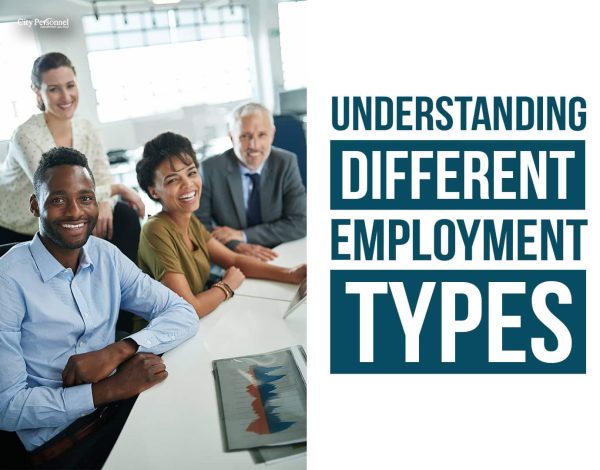The Changing Landscape of Employment
Gone are the days when a nine-to-five job was the default career path for most people. Today, the employment landscape is more diverse than ever, offering various types of work arrangements that cater to different lifestyles, skill sets, and career goals. From full-time positions to freelance gigs, understanding the nuances of each employment type can make a significant difference in your job search and career trajectory.
In this blog post, we’ll explore the different types of employment, including full-time, part-time, freelance, and contract work. We’ll break down the pros and cons of each to help you make informed decisions that align with your career goals and personal preferences. By the end of this guide, you’ll have a clearer understanding of which employment type might be the best fit for you.
Defining Employment Types: Full-time, Part-time, Freelance, and Contract
Full-time Employment
Full-time employment is often seen as the traditional form of work. Employees typically work around 40 hours per week, providing a stable and consistent paycheck. This stability is one of the main benefits, as it allows for financial planning and security.
In addition to a steady income, full-time positions often come with a range of benefits. These can include health insurance, retirement plans, and paid time off, which add significant value to the employment package.
However, full-time employment does have its drawbacks. The lack of flexibility is a major concern for many, as employees usually have less control over their schedules. This can make it challenging to maintain a healthy work-life balance, especially in demanding roles.
Part-time Employment
Part-time employment offers a different set of advantages, primarily centered around flexibility. Employees work fewer hours than their full-time counterparts, which can be ideal for balancing work with other commitments like education or family.
This flexibility can lead to an improved work-life balance, allowing individuals to pursue personal interests or responsibilities alongside their job. It’s a popular choice for those seeking a more adaptable schedule.
On the downside, part-time positions often come with limited benefits. Reduced access to health insurance, retirement plans, and paid time off can be significant drawbacks, especially for those who rely on these perks for their well-being.
Freelance Work
Freelance work has gained popularity with the rise of the gig economy. Freelancers work independently, often on a project-by-project basis, which allows for a high degree of independence.
This independence means freelancers can choose the projects they work on, providing a diverse and dynamic work environment. It’s an attractive option for those who enjoy variety and autonomy in their professional life.
However, freelancing comes with its challenges. Income instability is a primary concern, as freelancers may face fluctuations in their workload. This can lead to inconsistent earnings, requiring careful financial planning and management.
Contract Work
Contract employment involves working on specific projects or for a set period, often through an agreement with a company. One of the key benefits is the potential for higher pay, as companies may offer premium rates for specialized skills.
Contract work also provides the opportunity to gain experience with different organizations and industries. This can be a great way to build a diverse portfolio and expand professional networks.
Despite these advantages, contract work lacks job security. Contracts can end abruptly, leaving workers without a steady income or the benefits associated with full-time positions. This uncertainty can be a significant drawback for those seeking long-term stability.
Tips for Choosing the Right Employment Type
Assess Your Financial Needs
Consider your financial situation and obligations. Full-time jobs offer the most financial stability and benefits, but if you have a strong financial cushion or other sources of income, part-time, freelance, or contract work might be viable options.
Evaluate Your Lifestyle
Think about your lifestyle and how much flexibility you need. If you have other significant commitments, a part-time or freelance role may offer the balance you need. On the other hand, if you thrive on routine and stability, full-time employment might be the best fit.
Consider Your Career Goals
Your long-term career goals should also influence your decision. Full-time roles often offer more opportunities for advancement within a company, while freelance and contract work can help you build a diverse portfolio and expand your network quickly.
Weigh the Benefits
Consider the non-monetary benefits like health insurance, retirement plans, and paid leave. These can add significant value to a full-time role and should not be overlooked when making your decision.
Test Different Options
If you’re unsure which employment type is best for you, consider testing different options. You might start with a part-time job while freelancing on the side to see which setup suits you best. This can provide valuable insights and help you make a more informed decision.
Conclusion
Choosing the right type of employment is a pivotal decision that can greatly impact your career and personal life. By understanding the pros and cons of full-time, part-time, freelance, and contract work, you can make an informed choice that aligns with your financial needs, lifestyle, and career goals.
Remember, there’s no one-size-fits-all answer. What works best for you may differ from someone else’s ideal setup. Take the time to evaluate your options, consider your priorities, and don’t hesitate to test different employment types to find the perfect fit for you.







